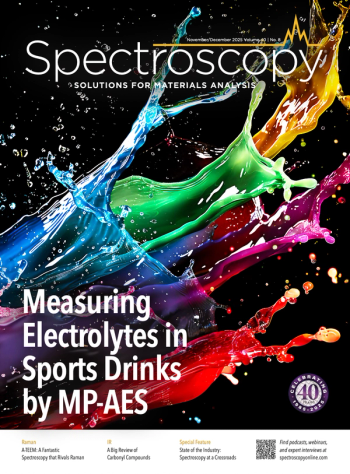
Integrating Colorimetry and NIR Spectroscopy to Better Identify Plant-Based Oils and Fatty Products
A recent study out of Russia introduced a new method for identifying plant-based oils and adulterated dairy products.
Plant-based oils and dairy products are consumed by humans daily. They comprise an essential part of human diets since the time of ancient civilizations (1). Plants are rich in nutrients, and therefore, they have served as a primary source of lipids and fats (1). However, in the industrial age, it is becoming harder to ensure that authenticated food products hit the markets for consumers. As a result, analytical techniques are needed in quality control to make sure food products are authenticated before they are shipped out to grocery stores and supermarkets.
In a study out of Russia, a team of researchers explored this topic by focusing on plant-based oils, fatty products, and adulterated dairy products such as butter. In their study, which was published in the Journal of Applied Spectroscopy, the research team utilizes near-infrared (NIR) spectroscopy and colorimetry, integrating these techniques with three-dimensional (3D) printing devices and smartphone-based applications to analyze these food products (2). Their study is indicative of the current trend of combining science and technology to solve real-world problems.
The research team demonstrated how their method achieved accurate results quickly. By employing ultraviolet (UV) and infrared (IR) light-emitting diode (LED) matrices (at 390 nm and 850 nm, respectively) and using the smartphone application PhotoMetrix PRO, the researchers showed how their method can deliver real-time analytical signals (2). The study also uses Fourier-transform near-infrared (FT-NIR) spectroscopy in the near-IR region (10,000–4000 cm⁻¹) for solid sample analysis, with diffuse reflectance spectra processed through the TQ Analyst and The Unscrambler X applications software (2).
Using 3D-printed devices and smartphones made acquiring data simple. These devices allowed the team to collect diffuse reflectance (DR) and fluorescence data (2). The research team also used principal component analysis (PCA) and hierarchical cluster analysis (HCA), two chemometric algorithms, to visually map the adulterated and authentic products on PCA and HCA graphs, highlighting clear distinctions between categories (2).
For instance, butter samples with varying milk fat mass fractions (ranging from 61.5% to 99%) were utilized to construct calibration curves (2). The partial least squares (PLS) algorithm and univariate analysis methods provided a robust framework for determining milk fat concentrations. Calibration error rates (RMSEC) remained below 1.31%, while predictive properties (RMSEP) were ≤ 4.45%, showcasing the high accuracy of the method (2).
The PCA and HCA graphs showed the differences between authentic and adulterated butter samples, which confirmed the effectiveness of the research team’s methods. On both PCA and HCA graphs, adulterated butter was clearly separated from natural products, and the dendrogram showed no intersections between these categories (2).
Testing across a wide array of samples, including butter and vegetable oil products from various manufacturers, further validated the method's robustness. The predictive error for dairy products remained ≤ 4.97% in multivariate analyses, whereas for margarine, errors exceeded 10% (2). Interestingly, the relative deviation of results from declared packaging mass fractions was ≤ 4.8% for dairy products using univariate analysis (2). In stark contrast, margarine showed deviations between 96.3% and 96.5%, underscoring significant discrepancies in its fat composition (2).
The researchers demonstrated in their study that smartphone-based applications and 3D-printed devices can help limit the need for expensive laboratory equipment. As a result, this method presented by the team can help improve food quality control by serving as a portable and reliable solution for identifying oils, fats, and detecting adulteration in dairy products (2). Because their method is more affordable, it is a more accessible option for many users, from food inspectors to researchers (2).
References
- Cerone, M.; Smith, T. K. A Brief Journey into the History of and Future Sources and Uses of Fatty Acids. Front. Nutr. 2021, 8, 570401. DOI:
10.3389/fnut.2021.570401 - Amelin, V. G.; Emelyanov, O. E.; Tretyakov, A. V.; Kish, L. K. Identification and Detection of Adulterated Butter by Colorimetry and Near-IR-Spectroscopy. J. Appl. Spectrosc. 2024, 91, 826–834. DOI:
10.1007/s10812-024-01790-0
Newsletter
Get essential updates on the latest spectroscopy technologies, regulatory standards, and best practices—subscribe today to Spectroscopy.



